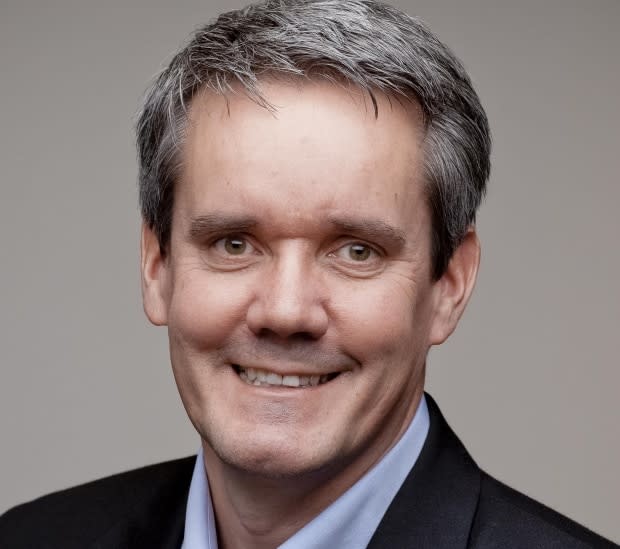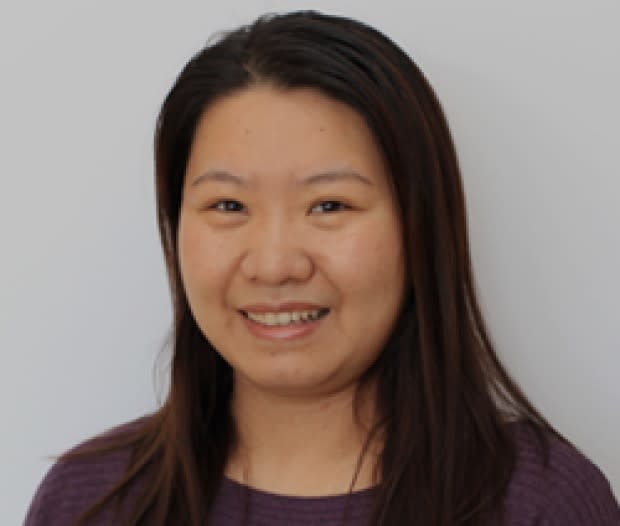'Breakthrough' Atlantic project aims to track fish movement, health
A new Atlantic Canadian project is looking to develop ways of fish tracking that could have impacts for researchers and companies around the world.
This week, Canada's Ocean Supercluster announced the $29-million Ocean Aware Project. The Supercluster is a joint business and federal government program designed to promote innovation in ocean technology.
The project is led by Innovasea, which has a workforce based in Bedford, N.S., alongside Ocean Choice International, Irving Shipbuilding, Dartmouth Ocean Technologies, Xeos Technologies and Emera.
"It's truly a breakthrough possibility that we're talking about here, that can be broadly applied to anything to do with health of animals in the ocean," said Mark Jollymore, Innovasea president.
"The ability to measure and predict fish health and movement has broad, broad application beyond the scope of Ocean Aware."

Ocean Aware aims to develop new technology to monitor fish health and movement and to help with stock assessment and predictive fishing. It also aims to better monitor marine life around fixed underwater structures.
It's the second project funded under the Supercluster's technology leadership stream. The first was $20 million for an advanced ocean floor mapping project led by St. John's-based Kraken Robotics.
Jollymore said the first phase of the three-year project will have Innovasea and partners build new technology, and then go into development to bring tools into the marketplace.
They will be adding new jobs in various areas, he said, while also training existing staff over the course of the project, to grow the ocean tech sector in the region.
In wild fisheries, Jollymore said better tracking technology leads to better data for building stock assessments in partnership with various universities and Fisheries and Oceans Canada.
Jin Gao, a research scientist at the Fisheries and Marine Institute at Memorial University of Newfoundland, said she was excited about the Ocean Aware program because the data that will be generated through new tools is "very needed" for stock assessment.

She said she hopes it will add to awareness of what's going on in various ecosystems, to show where, when and how many fish are in a location.
Once Innovasea develops the initial technology, Gao said her team of three scientists and a graduate student will begin tagging various fish species to gather new data.
The project will help fill in a "missing piece" of how various stocks of flatfish in the Atlantic are doing, since it is hoped it will be able to track how far fish are moving around their boundaries, or whether they're crossing the lines of where scientists predict they would stay.
Having a better picture of where various species appear could help cut down on bycatch — the fish and other sea life brought in unintentionally — and fuel costs since companies could better target where to go.
Although quotas mean there wouldn't be more fish taken out of the ocean, better technology is all about "fishing smarter," said Martin Sullivan, CEO of the St. John's-based Ocean Choice seafood business.
"If you can catch it quicker and more efficiently, of course there's less environmental impact right, and there's cost savings as well," he said.

At the root of the project is making sure the wild fishery is around for future generations, Sullivan said.
"If we can engage in practices where we can ensure the sustainability for the future, well, that helps everybody, and it ensures we have these resources to catch for a long time."
For aquaculture, which includes fish farms on land and in the water, Jollymore said the new technology could predict harmful algae blooms or flash-freezes before they happen.
The health-monitoring ability would also let aquaculture companies know how their stocks are doing, Jollymore said, or where Atlantic salmon are dying in the ocean before they're able to return to New Brunswick waterways.
When it comes to marine renewable energies, like turbines for tidal power, the new tools could ensure the structures aren't interfering with wild fish and the surrounding environment.
It would also allow companies to reduce the downtime of the machines due to at-risk species moving through the area, and be more selective and targeted on how they spill water down the machine to allow fish and sea life safe passage around the hydro dams or other machines.
Ocean Aware's total cost is funded by $13.74 million from the Supercluster, which matched $15.7 million that came from industry partners.
"We're excited by the size and scope and the game changing nature and the big bold thinking that this project represents," said Kendra MacDonald, CEO of the Ocean Supercluster.
She said they have about 20 projects contracted right now, which will be announced over the next few months as they're made official.
MORE TOP STORIES


